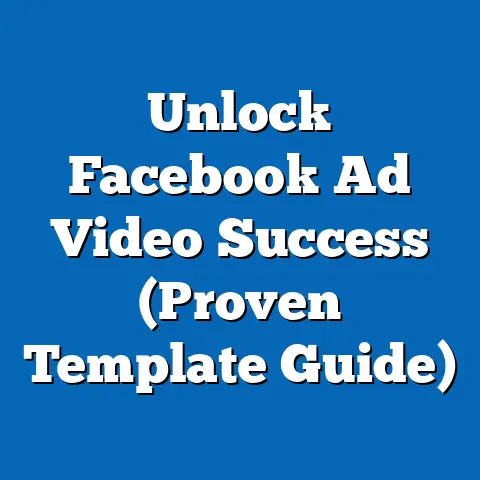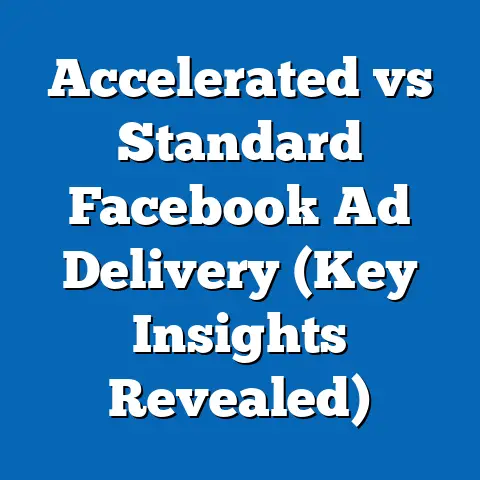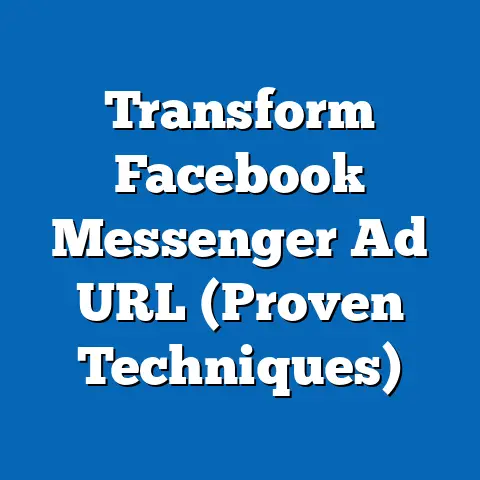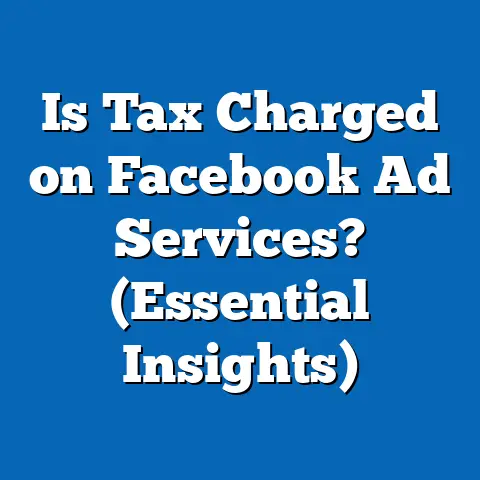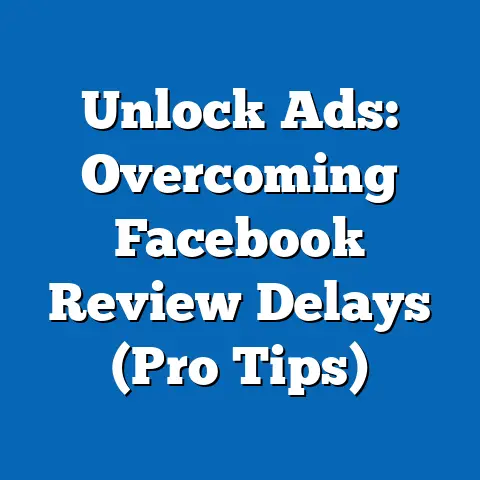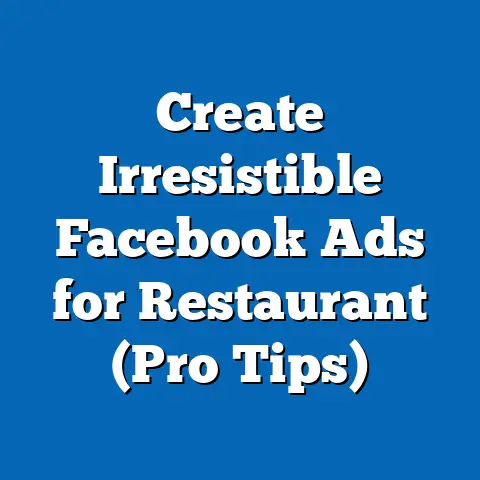Maximize Facebook Watch Ads ROI (Expert Strategy Guide)
Video content has exploded in popularity across all social media platforms, and Facebook Watch is no exception. As businesses increasingly invest in Facebook Watch Ads, the pressure to demonstrate a strong return on investment (ROI) becomes paramount. I’ve seen firsthand how a strategic approach to Facebook Watch can transform advertising efforts, turning them into highly effective lead generation and brand awareness campaigns. Facebook Watch offers a unique opportunity to connect with a highly engaged audience through a premium video viewing experience. This guide will arm you with expert strategies to maximize your ROI, turning your ad spend into meaningful results.
Understanding the Landscape of Facebook Watch Ads
Facebook Watch is more than just another video platform; it’s a dedicated space within Facebook where users actively seek out longer-form content, original series, and live events. Its audience tends to be more engaged and intentional in their viewing habits compared to the general Facebook feed. Demographically, Facebook Watch appeals to a broad range of users, with strong representation across various age groups, interests, and geographic locations. This makes it a prime territory for advertisers who know how to speak the language of video.
Facebook Watch Ads differ significantly from traditional Facebook News Feed ads. They are designed to be less disruptive and more integrated into the viewing experience. Users are typically more receptive to ads that are relevant and add value to their viewing experience. This is where the challenge lies: creating ads that are not only informative but also entertaining and engaging enough to hold their attention.
Recent statistics highlight the growth trajectory of Facebook Watch. According to Meta’s reports, millions of users engage with Watch daily, spending significant time on the platform. This level of engagement makes it a powerful advertising medium, providing advertisers with a captive audience ready to consume video content. I’ve seen many businesses, including my own, leverage these statistics to justify increased investment in Watch, knowing that the potential reach and impact are substantial.
Setting Clear Objectives
Before diving headfirst into creating video ads, it’s critical to define exactly what you want to achieve. Are you looking to boost brand awareness, drive engagement, generate leads, or increase conversions? Each objective requires a different approach to ad content, targeting, and measurement.
For example, if your objective is brand awareness, your ads should focus on showcasing your brand’s personality, values, and unique selling proposition. These ads often feature compelling visuals, storytelling, and minimal direct sales pitches. I recall working with a local bakery that used Facebook Watch Ads to share behind-the-scenes stories of their bakers and the passion that goes into their creations. This campaign wasn’t about selling; it was about building a connection with the community.
On the other hand, if your goal is lead generation, your ads should include a clear call-to-action (CTA) that prompts viewers to provide their contact information. This could be through a sign-up form, a quiz, or a free download. I once helped a real estate company design a Facebook Watch Ad campaign that offered a free guide to first-time homebuyers. The ad featured stunning property visuals and a compelling voiceover, resulting in a significant increase in qualified leads.
The key takeaway here is that your advertising objectives should directly influence your ad content and targeting strategies. Without a clear objective, your ads risk being generic and ineffective, leading to wasted ad spend.
Crafting Compelling Video Content
The heart of any successful Facebook Watch Ad campaign is the video content itself. In a world saturated with digital noise, your video needs to stand out and capture attention within the first few seconds. This requires a combination of storytelling, visuals, and a clear call-to-action.
Storytelling is a powerful tool for connecting with your audience on an emotional level. Instead of simply listing your product’s features, consider sharing a story about how it solves a problem or improves someone’s life. I’ve found that ads that evoke emotion – whether it’s humor, inspiration, or empathy – tend to perform exceptionally well.
Visuals are equally important. High-quality production values, captivating imagery, and creative editing can significantly enhance your video’s appeal. Consider using motion graphics, animations, and dynamic text overlays to keep viewers engaged. I’ve also seen a trend towards authentic, user-generated content, which can feel more relatable and trustworthy than highly polished commercials.
Your call-to-action (CTA) should be clear, concise, and strategically placed within your video. Tell viewers exactly what you want them to do next – whether it’s visiting your website, signing up for a newsletter, or making a purchase. I always advise clients to test different CTAs to see which ones resonate best with their audience.
Optimizing video length is also crucial. While Facebook Watch allows for longer-form content, attention spans are still limited. Aim for concise videos that deliver your message effectively without overstaying their welcome. I typically recommend keeping ads under 60 seconds, with the sweet spot being around 15-30 seconds for maximum engagement.
One example of a successful video ad on Facebook Watch is a campaign by a fitness apparel brand. Their ad featured real people of all shapes and sizes working out in their gear, accompanied by upbeat music and inspirational messages. The ad resonated with viewers because it felt authentic and relatable, leading to a significant increase in brand awareness and sales.
Targeting the Right Audience
Even the most compelling video content will fall flat if it’s not shown to the right audience. Facebook’s advanced targeting options allow you to reach specific demographics, interests, behaviors, and custom audiences. This level of precision is essential for maximizing your ROI.
Demographic targeting allows you to narrow your audience based on factors like age, gender, location, education, and job title. This is particularly useful for businesses targeting specific professional groups or geographic areas.
Interest targeting lets you reach people who have expressed an interest in certain topics, hobbies, or products. This is a great way to connect with potential customers who are already engaged in your industry.
Behavior targeting allows you to target users based on their online activity, such as their purchase history, device usage, and travel habits. This is particularly effective for retargeting customers who have previously interacted with your brand.
Custom audiences are created by uploading your own customer data, such as email addresses or phone numbers, to Facebook. This allows you to target your existing customers with personalized ads or create lookalike audiences – users who share similar characteristics to your current customer base.
Audience segmentation is the process of dividing your target audience into smaller, more homogeneous groups based on shared characteristics. This allows you to tailor your ad content and messaging to resonate with each segment. For example, you might create separate ads for millennials and baby boomers, each highlighting different benefits of your product or service.
Leveraging Facebook’s analytics tools is crucial for refining your targeting strategies. By tracking viewer behavior and preferences, you can identify which targeting options are most effective and adjust your campaigns accordingly. I often use Facebook Pixel data to understand which ads are driving the most conversions and then optimize my targeting to reach more users who exhibit similar behavior.
Budgeting and Bidding Strategies
Setting the right budget and choosing the appropriate bidding strategy are critical for maximizing your ad performance. Facebook offers various budgeting methods, including daily budgets and lifetime budgets.
Daily budgets allow you to set a fixed amount that you’re willing to spend each day. This is a good option for campaigns that run continuously over a long period.
Lifetime budgets allow you to set a total budget for the entire duration of your campaign. This is useful for campaigns with a specific end date, such as a product launch or a seasonal promotion.
Bidding strategies determine how much you’re willing to pay for each ad impression or click. Common bidding strategies include cost-per-click (CPC) and cost-per-thousand impressions (CPM).
CPC bidding allows you to pay only when someone clicks on your ad. This is a good option for campaigns focused on driving traffic to your website or generating leads.
CPM bidding allows you to pay for every thousand impressions your ad receives. This is useful for campaigns focused on brand awareness and reaching a large audience.
I recommend monitoring your budget allocation closely and adjusting it based on ad performance metrics. If you see that certain ads are performing exceptionally well, consider increasing their budget to maximize their reach. Conversely, if you notice that some ads are underperforming, consider reducing their budget or pausing them altogether.
Analyzing Performance Metrics
Measuring the success of your Facebook Watch Ads requires tracking key performance indicators (KPIs). These metrics provide valuable insights into how your ads are performing and where you can make improvements.
Key KPIs to track include:
- Views: The number of times your video ad has been viewed.
- Engagement Rates: The percentage of viewers who have interacted with your ad, such as liking, commenting, or sharing.
- Click-Through Rates (CTR): The percentage of viewers who have clicked on your ad’s call-to-action.
- Conversion Rates: The percentage of viewers who have completed a desired action, such as making a purchase or filling out a form.
A/B testing is a powerful tool for optimizing your ad strategies. By testing different versions of your ads – such as different headlines, visuals, or CTAs – you can identify which elements resonate best with your audience. I often run multiple A/B tests simultaneously to continuously refine my ad performance.
Facebook’s Ads Manager provides a comprehensive platform for analyzing your ad performance. It allows you to track all of the key KPIs mentioned above, as well as demographic data, geographic data, and device data. This information can help you understand who is engaging with your ads and how they are interacting with them.
Conclusion
Maximizing your Facebook Watch Ads ROI requires a strategic approach that encompasses clear objectives, compelling video content, targeted audience segmentation, effective budgeting and bidding strategies, and thorough performance analysis. By implementing the expert strategies outlined in this guide, you can transform your ad spend into meaningful results.
I encourage you to take a proactive approach and experiment with different ad strategies. The digital landscape is constantly evolving, so it’s important to continuously optimize your campaigns based on data-driven insights.
Now, it’s time to put these expert strategies into action. Start implementing them in your next Facebook Watch Ad campaign and watch your ROI soar.

